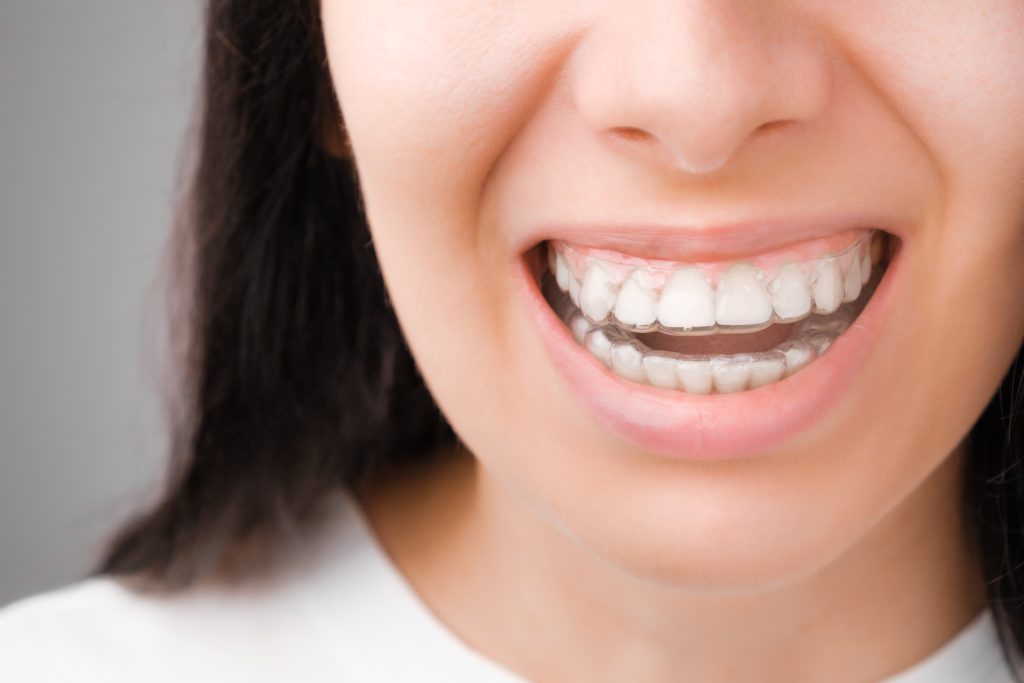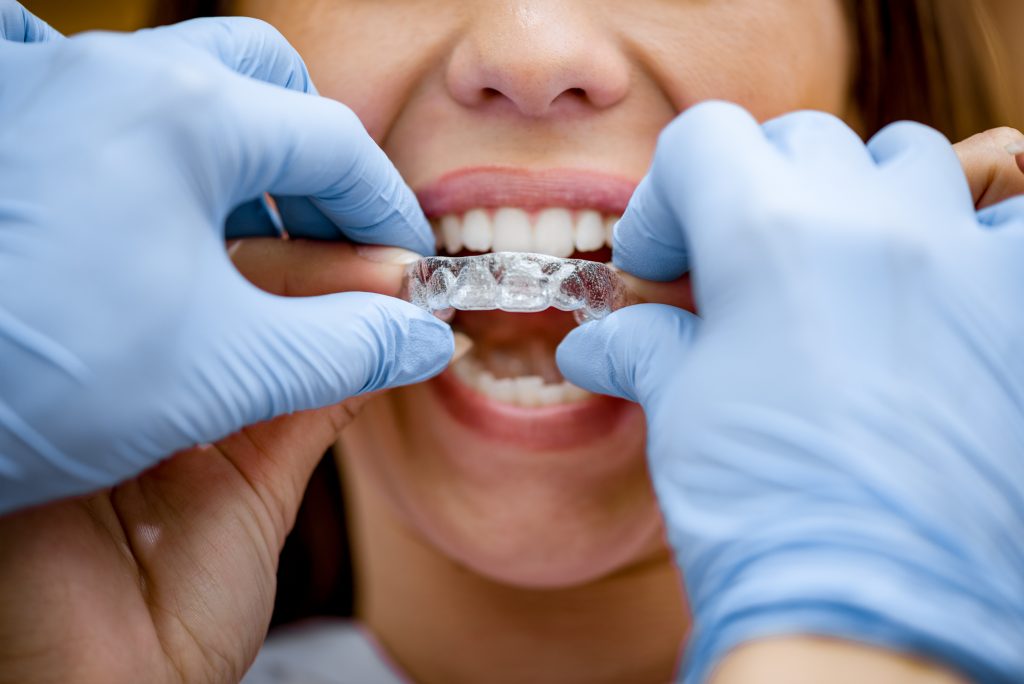Types of Orthodontic Treatments
Each patient has specific needs, which is why there are different orthodontic options tailored to each case:
- Metal Braces: The most traditional and effective option, especially for complex cases. They consist of small brackets attached to the teeth, connected by a metal arch that applies the necessary pressure to align them.
- Aesthetic Braces: Made from materials such as porcelain or sapphire, these braces offer a more discreet treatment without losing effectiveness. They are ideal for those who want a less visible alternative to metal braces.
- Clear Aligners: Also known as invisible orthodontics, these removable devices are custom-made to gradually move the teeth. They are virtually imperceptible and offer greater comfort and hygiene.
- Interceptive Orthodontics: Especially recommended for children, it helps correct issues with bone growth and dental alignment before they become more serious conditions. This includes the use of functional appliances, expanders, and retainers.
Invisible Orthodontics: An Aesthetic and Comfortable Alternative
Clear aligners have revolutionized modern orthodontics, offering an aesthetic and functional option for those seeking discretion in their treatment. They are designed with advanced technology to fit perfectly to the teeth, allowing progressive movement without the need for brackets or wires.
Some of its main advantages include the ability to remove them for eating and brushing teeth, their virtually invisible design, and the comfort they provide by reducing the usual discomforts of traditional treatments.

How Much Does an Orthodontic Treatment Cost?
The price of orthodontics varies depending on the type of treatment chosen, the complexity of the case, and the duration of the process. In general, metal braces tend to be the most affordable option, while clear aligners represent a higher investment due to the technology used in their manufacturing.
Many clinics offer financing plans to make these treatments more accessible, allowing patients to improve their smile without compromising their budget.
Orthodontics in Children: When is the Right Time?
Detecting orthodontic issues during childhood allows for more effective correction of dental and jaw growth abnormalities. Specialists recommend a first orthodontic evaluation around the age of six or seven, when permanent teeth begin to emerge.
Common treatments for children include palatal expanders to correct crossbites, functional appliances to guide jaw growth, and early braces in specific cases.

Take Care of Your Smile During Treatment
To ensure the best results, it is essential to follow a series of care instructions while undergoing orthodontic treatment. Maintaining rigorous oral hygiene, brushing your teeth after every meal, avoiding hard or sticky foods that could damage the appliances, and attending regular check-ups with the orthodontist are key measures for the success of the treatment.
Transform Your Smile with Orthodontics
Orthodontics not only improves dental aesthetics but also contributes to better oral health and quality of life. If you are considering starting a treatment, consult with a specialist to find the option that best suits your needs. The first step toward a perfect smile begins today.


